Words and Photos: MASONRY Magazine, Richard “Mike” Johnston, and Gary Joyner
Editorial Note: MASONRY Magazine had the chance to sit down with the 2022 Hall of Fame inductees Richard “Mike” Johnston and Gary Joyner. Thank you, Mike and Gary, for sitting down with us and for all of your work in the industry.
Richard “Mike” Johnston
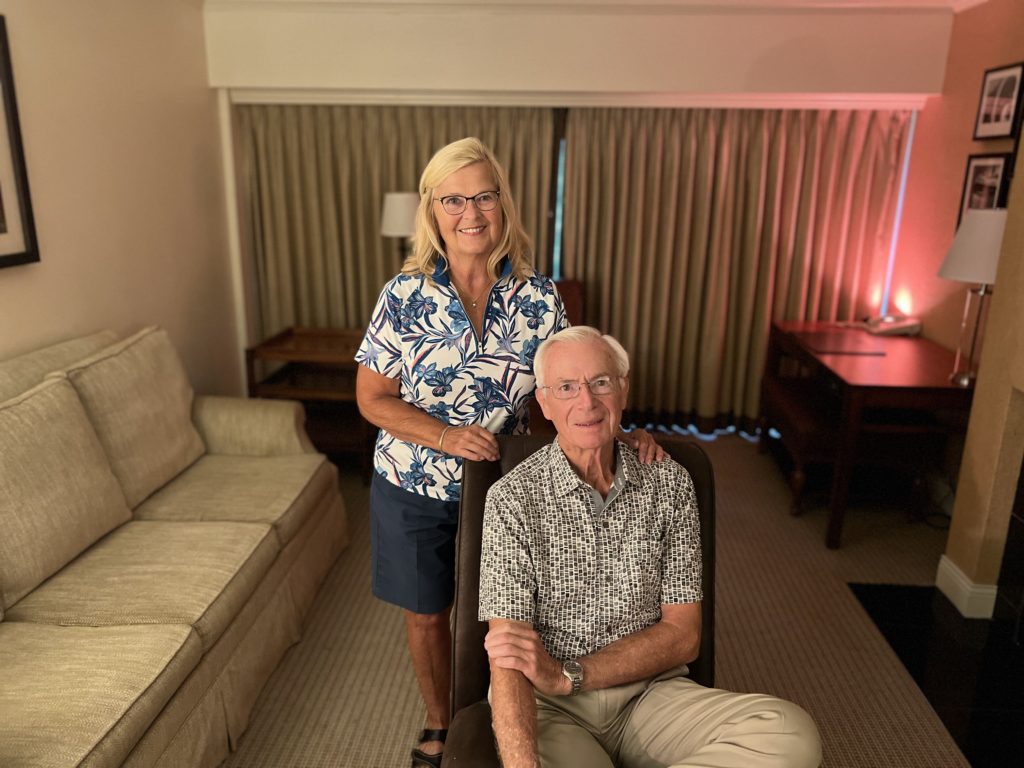
MASONRY Magazine: How did you get started in the industry?
Richard “Mike” Johnston: Well, actually, my father was a small mason contractor, and he ran it from the house. When I was a young lad, I would get up in the morning and go to the kitchen for breakfast, and he would be at the table making phone calls. There was always this man there that I didn’t know, and finally, I asked after a while, “Is that Uncle Charlie?”. He replied, “No, no, no, that’s the salesman from Mutual Materials Company. The only way he can get ahold of me was to catch me before I left home in the morning.” This was like 1952, the early 50s. So, then I started watching how to become a mason contractor when I was in grade school. That’s how it actually worked out.
M.M.: So, from there, how did you make your way into and through the industry?
M.J.: I’ve always been interested in construction through my father, and I’ve always been interested in, I don’t know why, but architecture. So, when I got out of high school, I decided to go to the architecture school at the University of Washington, and I loved it. Instead of getting a degree in design, they offered a program in engineering and construction. Friends that I knew that were architects ended up being draftsmen. After a while, they weren’t as happy as they wanted to be, and they didn’t get the opportunity to put their name on the drawings for the big projects. They weren’t making the money they wanted to make, and I didn’t want to limit myself, so I wanted to be in construction. I wanted to use my architecture, I wanted to succeed in business, and I wanted to have my own business. That’s how I kind of developed from a kitchen table to working in the business, and I love it. In fact, I am almost sorry that my career is over in that industry because I enjoyed it a lot; I made a lot of friends for a lot of years, and still, I think one of the assets of MCAA participation is we can enjoy a lot of this for the rest of our lives.
M.M.: What are some challenges that you have faced in the industry?
M.J.: Well, the biggest challenge is living in the Pacific Northwest, which seems to be the timber capital of the world. My friends around the country say, “Mike, how do you expect to make a living when everyone up there is selling lumber?” I said, “We’re tough; we’ll figure it out,” because I didn’t want to move because I love our home. That was very challenging, and the other thing, particularly in our industry up there, is we have way more of our share of rain and inclement weather. So, we have to figure out a way to get jobs done; we end up with a lot of part days, a lot of added cost that you can’t really price in. Those are the challenges I have faced that I can recall off the top of my head.
M.M.: What are some of your proudest moments?
M.J.: Wow. Well, one was having a wife like Sharon, and I love her to pieces. She’s helped me through a lot of stuff in life and in business. She ran our books for 35 years, but I finally hired a full-time assistant so she could go golfing. It was worth it. I also built some interesting projects that I’m proud of, like college buildings, monuments, and those things for the government. I haven’t been quite as proud of my golf game as she [Sharon] is of hers. Anyway, we have a great life and a great home. We’ve got clams and oysters in our front yard, sea and mountain views, and I couldn’t ask for much more.
M.M.: Mike, what is your legacy?
M.J.: Good question. Obviously, a lot of it is in the masonry industry. We started with very little, and we accomplished a lot. I’m very proud of my time with MCAA, not only in the local but in the state, the region, and MCAA national, like going through the chairs and then being the president. I’m very proud of that, and it is very meaningful. As far as any other legacy, I suppose the fact that I have been playing golf for a long time. I belong to a very nice club in my home of Washington, and I was president of that club, so it seems like I’m a workaholic; when I get involved with something, someone finds a way to get me to do it. It’s been a success. Another part of that legacy would involve my son. I am very proud that he has taken over Johnston Construction Company, which was started by his grandfather, then by me, and now he is doing it and doing a very good job.
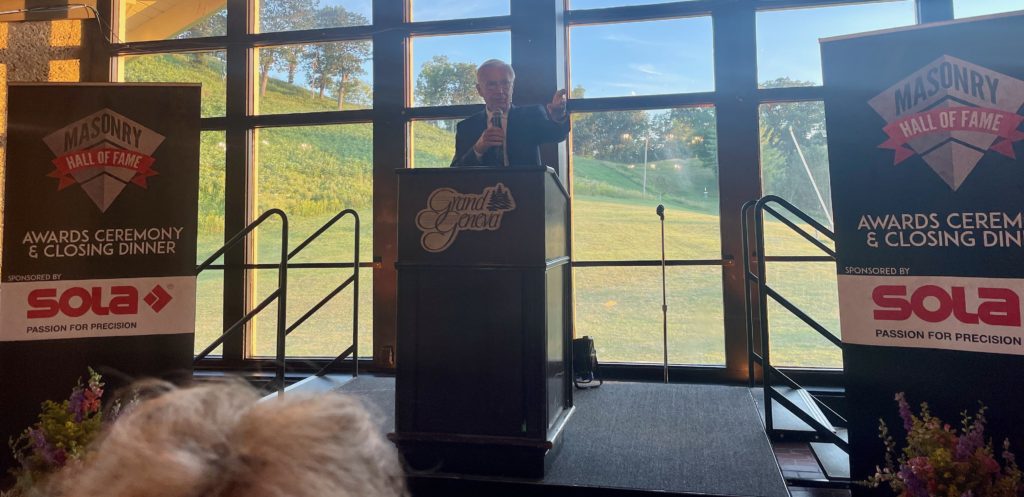
M.M.: What’s one piece of advice you would give to your younger self?
M.J.: Get involved; there are so many things that you can watch go by, but when you get involved, you can learn something, you can help something, and change things. If you just sit back and listen, the world will pass you by. If you see something that interests you, go for it, get every piece of it that you can, and be as good at it as you can. I’ve offered this to several younger people that I know that seem to bounce from one job to another and another and another, and pretty soon, they never quite get to the top. And maybe everybody doesn’t need to get to the top. My advice is if you find something you like, something you’re good at, go for it right now, go as far as you can with it, and keep chasing that dream. It takes a long time to get to the top in most organizations, businesses, and whatever else in life.
M.M.: What advice would you give to the younger people who are entering the industry?
M.J.: If you’re entering the masonry industry and the trades, be prepared for a lot of hard work and be prepared that it is going to beat up on your body, and you need to take care of it. Be prepared to not be working in the same place every day; you’ll be sent in a lot of different directions and a lot of different projects because construction is everywhere. But, it is so fulfilling to know that you built something that is going to be there when you’re gone, so it’s meaningful to me.
M.M.: Mike, what does it mean to be inducted into the Masonry Hall of Fame?
M.J.: Well, it’s a huge honor and something I never expected. I mean, I never tried for it; I just did my job and tried to do all I could for the industry. It’s an awesome award; I am totally thankful that I was even considered for that. It’s going to be a huge thing for the rest of my life that I can look back on and be proud of. It’s something that not many people can do, and I’m hoping that my son will appreciate it. He’s trying hard in our business, and it’s all good. This sort of ties me together with the people that I had a lot of respect for over the years, so maybe I have some of that too.
M.M.: Is there anything else that you would like to add or talk about?
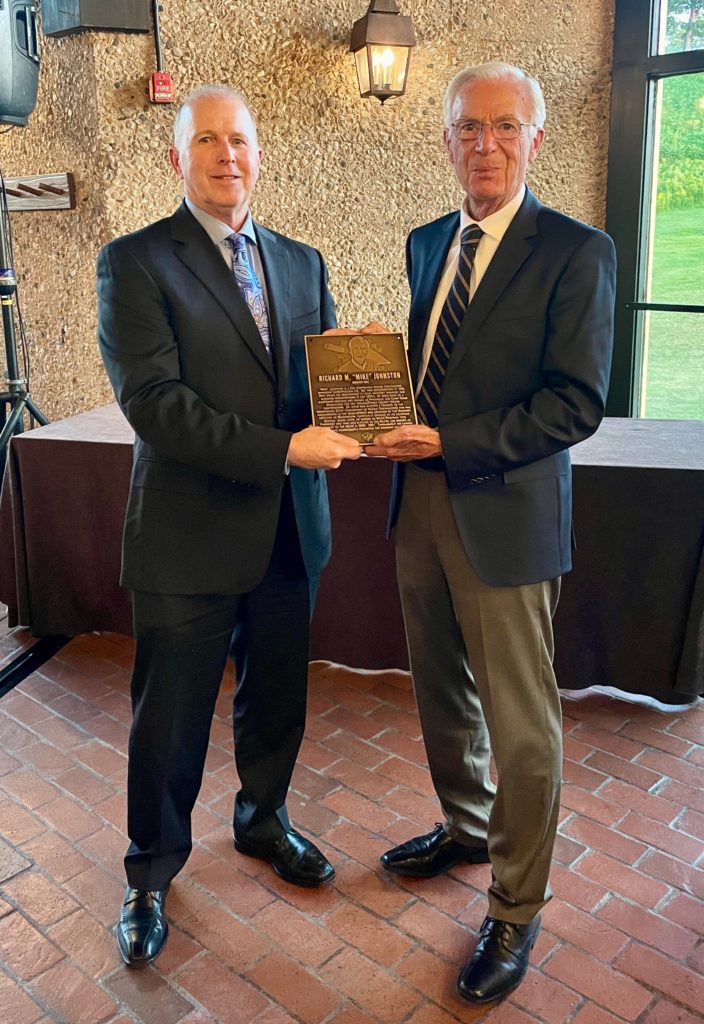
M.J.: Well, when Sharon and I got involved with MCAA, we started going to meetings, seminars, and events. Most of them were in the east or the Midwest, and we like the idea of getting to travel. One of the issues we met right off the bat is every time we got off the plane and drove to our hotel or whatever, I was going nuts: “Sharon, look at that! Brick building after brick building after brick building!” Nothing like that was existing in the Pacific Northwest, and I got thinking, “Wow, we’ve got to fix that,” and I know we live in the lumber capital of the world. We need to get more business, and if we could get anything like what they’re doing here, it’s going to be successful for our industry and the money in our jeans. But, having a history in contracting, construction, and architecture, I knew that if we were going to get any more brick buildings, it had to come from an architect. It has to be on those drawings, or we’re not going to have a building to build. I also knew from my history that an architect isn’t going to design something that he can’t be completely confident in and appreciate that he knew he did it right. That’s where I got a real start in the promotion and MCAA type of things. But our association, I would tell them, “Man, we’ve got to have some answers for these architects” and… I was looking at the reasons that they should be using masonry. A lot of these things that I am going to talk about, I did not do, but I certainly encouraged them to happen. Now all of this stuff is on the internet, you know, portals that can go online and call them up and use them. We started something a few years ago that was a voluntary certification program for mason contractors, and you had to take classes, you had to take a test, you had to know what you were doing, and then you could qualify for this certificate. Then, we’d put it on our bid forms. So, now, somebody got a bid from me and had the stamp that said certified, then knew that I had the education and the assurance of the quality. If they got a bid in that might have been a little lower from somebody else, they might not use them because they didn’t have that certification. We did a lot of things to help the architects be comfortable and know that they had somebody that could do the job right. I actually went to Washington, D.C., and had an opportunity to do some of the lobbying, and I had a lot of congressmen asking me what I thought were silly questions. I happened to be by a window, and I was looking out, and I said, “Would you like to come over here and take a look out this window?” Everything in view was brick or stone, and it’s going to be there for, like all masonry, centuries! It’s not just going to be there until it rained or something. Why would you want to change this? It’s beautiful. I don’t think this should be a debate; it should be a decision. It was an eye-opener to get involved in these things.
Gary Joyner
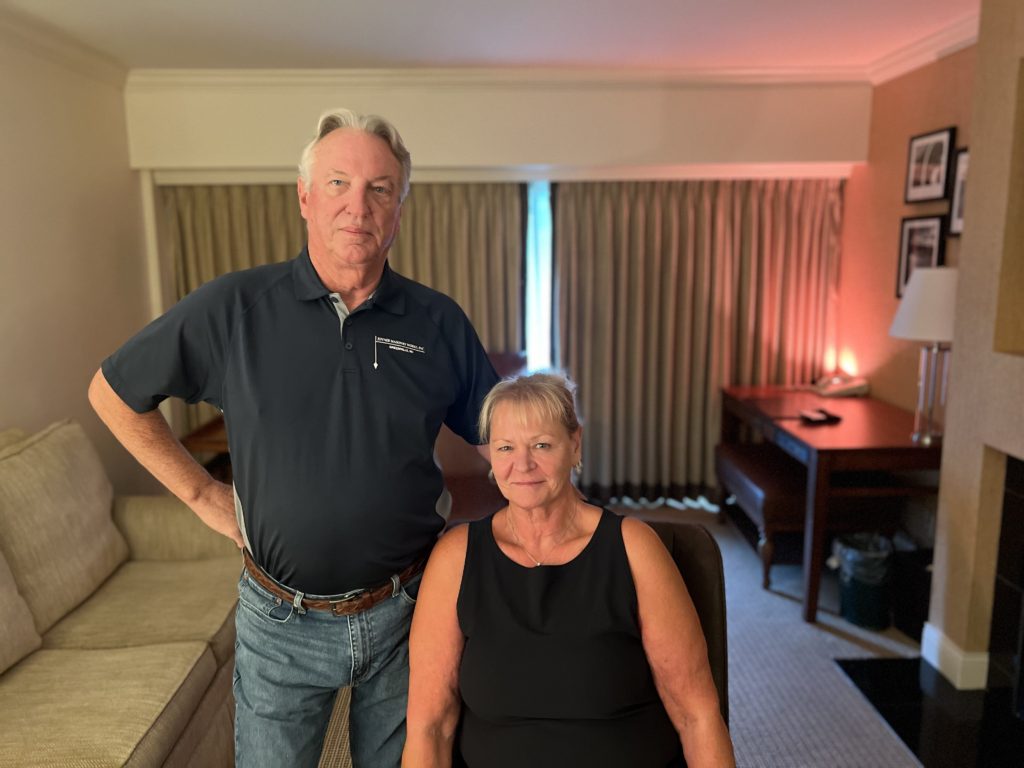
MASONRY Magazine: So, Gary, how did you get started in the industry?
Gary Joyner: I answered an ad in a newspaper. It said, “Wanted: Construction Laborer- Must Have Driver’s License,” so I qualified. So, I drove; it told me the address. I went out to this guy’s house, and he didn’t have a driver’s license, and he was a bricklayer. So, I was his chauffeur/laborer. He didn’t have a driver’s license because he was a drunk- imagine that. That’s how I got started in the industry, pushing a wheelbarrow.
M.M.: So, from there, how did you make your way through the industry to where you are now?
G.J.: So, you push a wheelbarrow if you get bored, and they make fun of you. I had a ponytail, so we were all redneck bricklayers making fun of you, so I’d get caught up and… I’d jump on the scaffold and learn how to spread mortar, and I’d learn how to lay brick. Then I met Shelly, my wife, 48 years ago this month. So I went back to school; my major was secondary education to be a woodshop teacher. So, I said, “I don’t believe I can handle this.” so I left college again and went to work for a general contractor. I was his masonry foreman; my crew was the laborer, and me, as an apprentice. Did that for about a year, resigned from him, bought a red Ford pickup truck, two wheelbarrows, and a mixer, and went hunting work in the residential market. So, I bricked houses for five years; in my first job, I got paid 70 dollars to lay a thousand bricks and 50 cents a block. So, a thousand bricks is two cubes meaning every time I would lay two cubes of brick; I’d get 70 dollars! That was in 1978. After several years of bricking houses, I got kind of bored with it, and I had heard about the masonry association, Mason Contractors Association. Luckily, I went to a couple of meetings and found out there was conventions, and there was a state association. It got my attention, so our first convention was 1983 in Rowland, North Carolina. We didn’t know anybody. Our first board meeting we went to we couldn’t even afford suitcases. We walked into the hotel with some brown paper bags full of clothes and toothbrushes, and we went to the stairwell at the other end of the motel so nobody would see us. One thing led to another, we got to know people and got involved in the association locally and state-wide. 1987 was my first term as President of North Carolina Masonry Contractors Association. In my second term- I forget when that was, five or six years ago- I did two terms as the president. Then, I got involved with the MCAA. Now I’m here.
M.M.: What are some of the challenges you’ve faced during your time in the industry?
G.J.: During the growing process… money. The more you do it, the more it takes. As you keep growing, it takes everything that you can come up with, and when you get to a certain size… I mean, my first credit line was 50,000 dollars. I mean, wow! Thank you; I said, “Man, this is something else.” So, that was a challenge. Never really got stuck on a receivable.
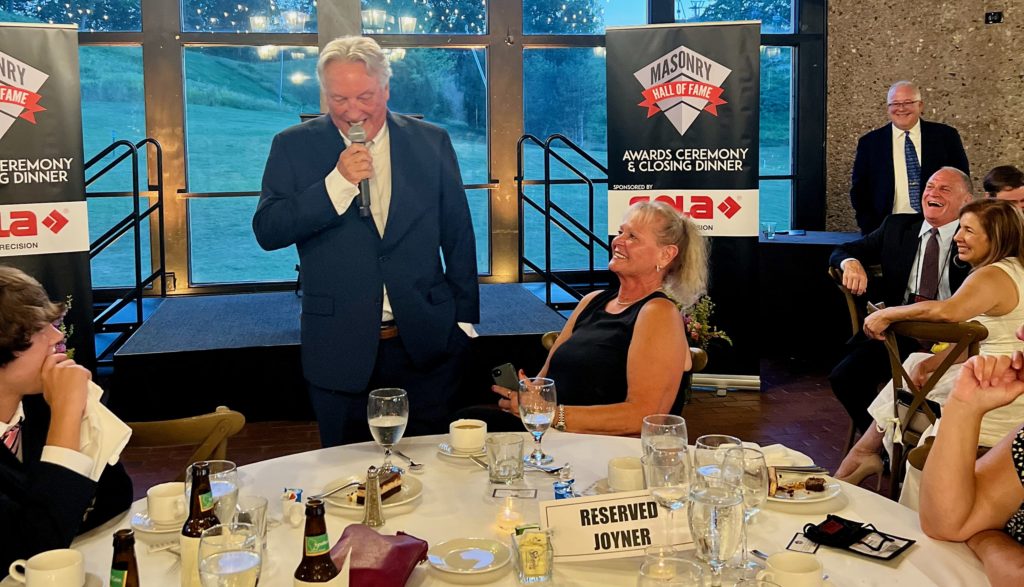
M.M.: What are some of your proudest moments?
G.J.: Well, of course, right now. One of my first and best phone calls from a G.C. was a Saturday afternoon in our little house we built. I had been chasing a job for several months; I mean, I’d call the guy every other week. Finally, he says, “I’m sorry; you’re not the low. I know you’ve done your homework, and you’ve called me and called me.” So, Saturday afternoon, I had just stirred a refreshment; it was about 4:30, maybe 5 o’clock. This general contractor calls me and says, “I just want to let you know that we want you to do the job.” It was my first big job, and I agreed to the schedule- that’s how we got the job. That was one of my favorite phone calls in the industry. We’re recognized that we got a pretty good reputation; what we also recognize is we’re not cheap. So, we don’t get a lot of stuff that we bid. We’ve done a lot of work at Duke University, University of North Carolina, NC State, ECU. We bid a lot of schools. One of my biggest moments was when it was five schools going to be built in Myrtle Beach, and my general said, “How many of those do you want?” I said, “I want them all.” Simultaneous construction of five schools. So, I walked into my son’s office, and I said, “We’re fixed to be on five schools simultaneous.” And he said, “Are you crazy?” I said, “No, what’s the problem?” He said, “Nothing!” So, we did five schools simultaneously. That was fun… a lot of fun. It was challenging, but it was satisfaction. Basically, no problems. I mean, I could sit here for an hour. If I had a list, I could give you an hour’s worth, but those are some of the goodies.
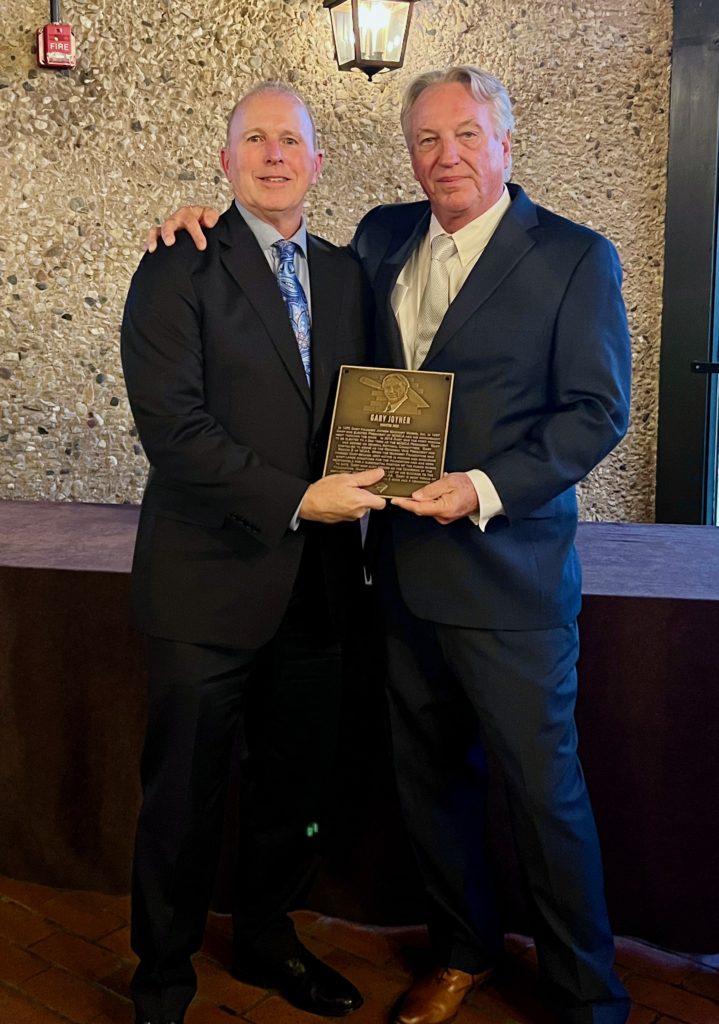
M.M.: So, what’s one piece of advice you would give to your younger self?
G.J.: Don’t change anything.
M.M.: What’s the biggest challenge facing the industry right now?
G.J.: Manpower.
M.M.: What is the legacy of Gary Joyner?
G.J.: I’ve always felt like you have to give something back, and I feel like I’ve done that.
M.M.: So, what advice would you give to younger people coming into the industry?
G.J.: Hang around me for about a week; that’s all you need to do.
M.M.: So, what does being inducted into the Masonry Hall of Fame mean to you?
G.J.: Highlight of my career.
